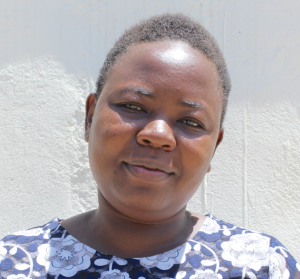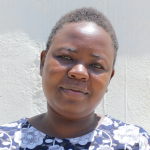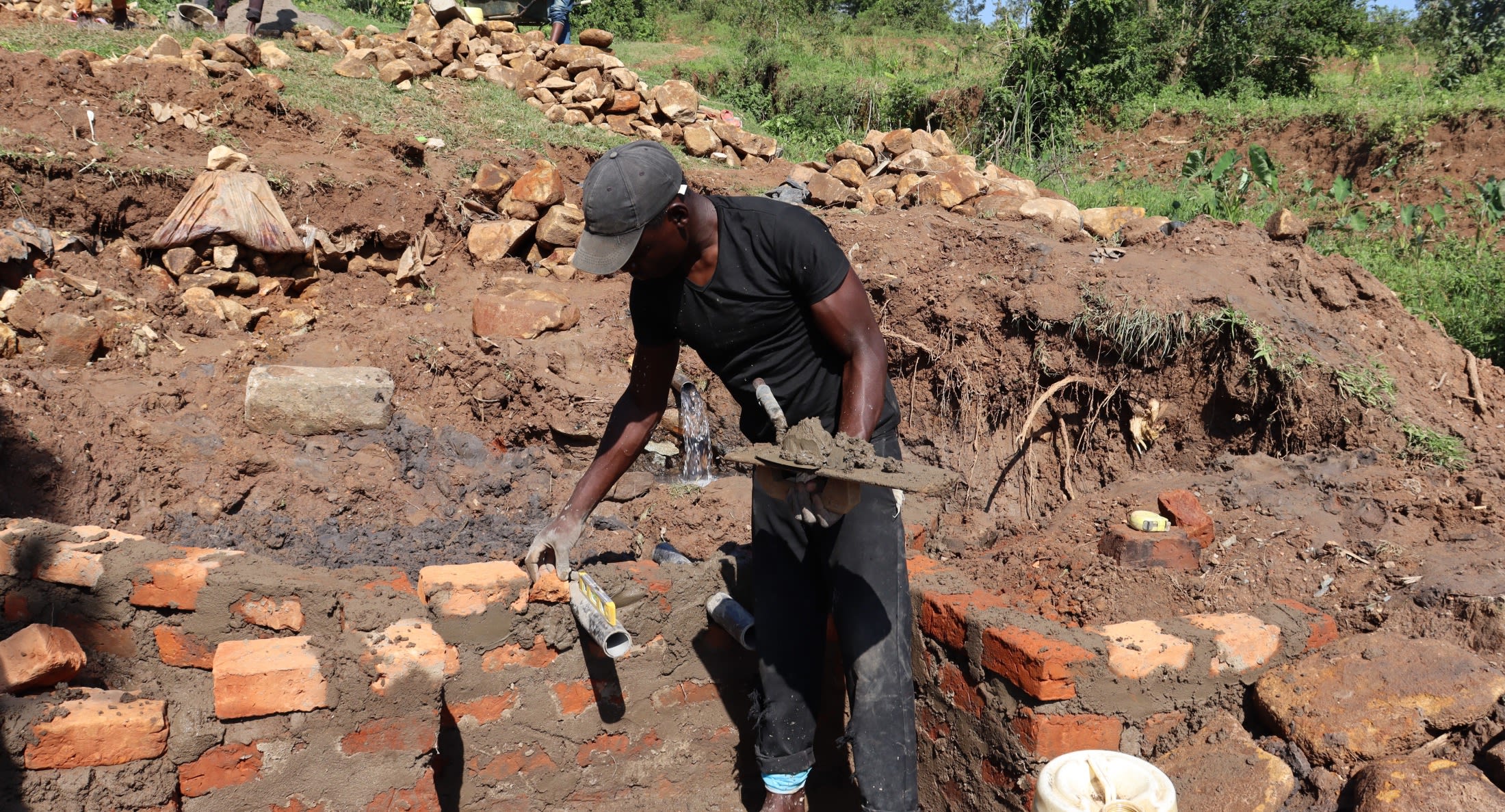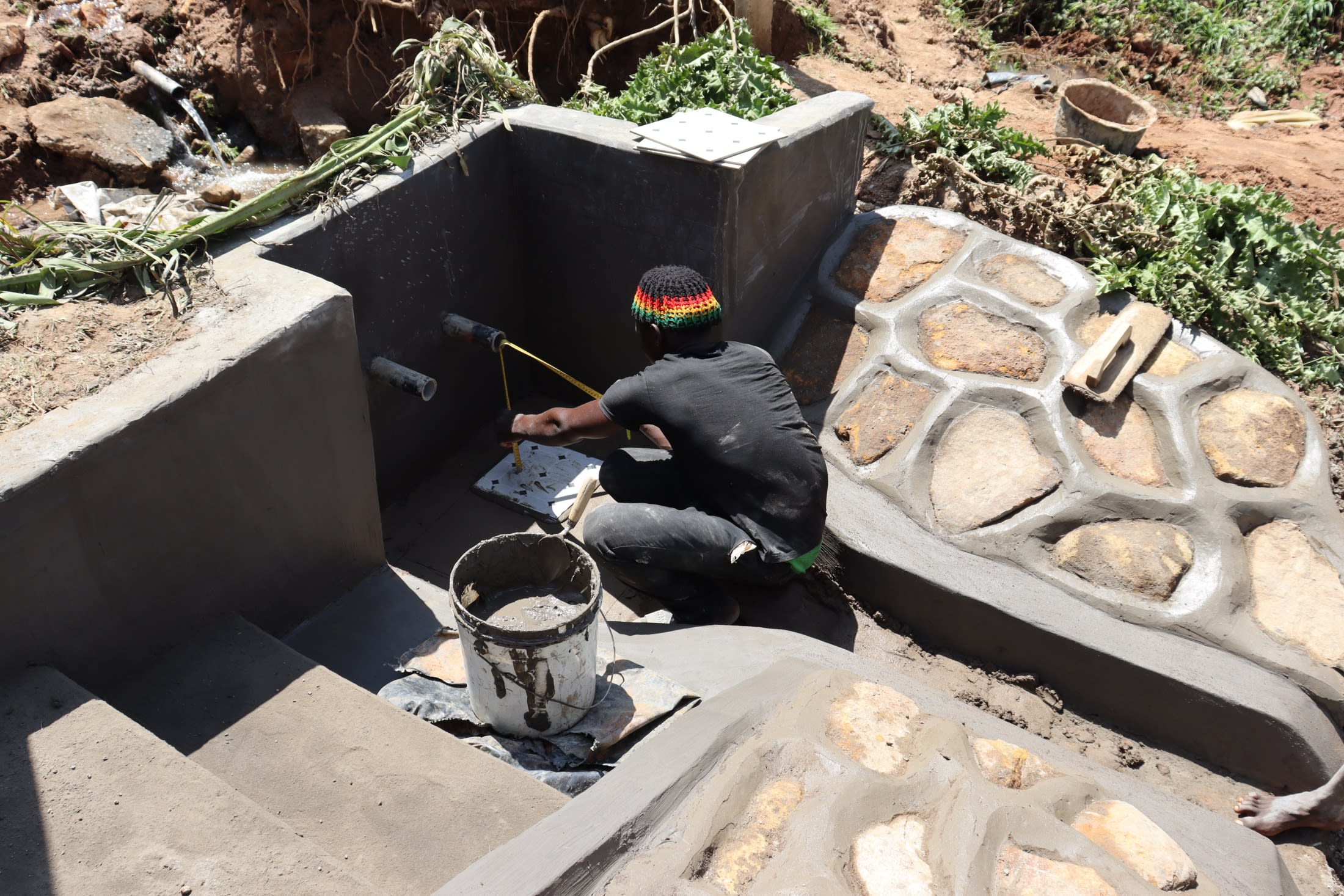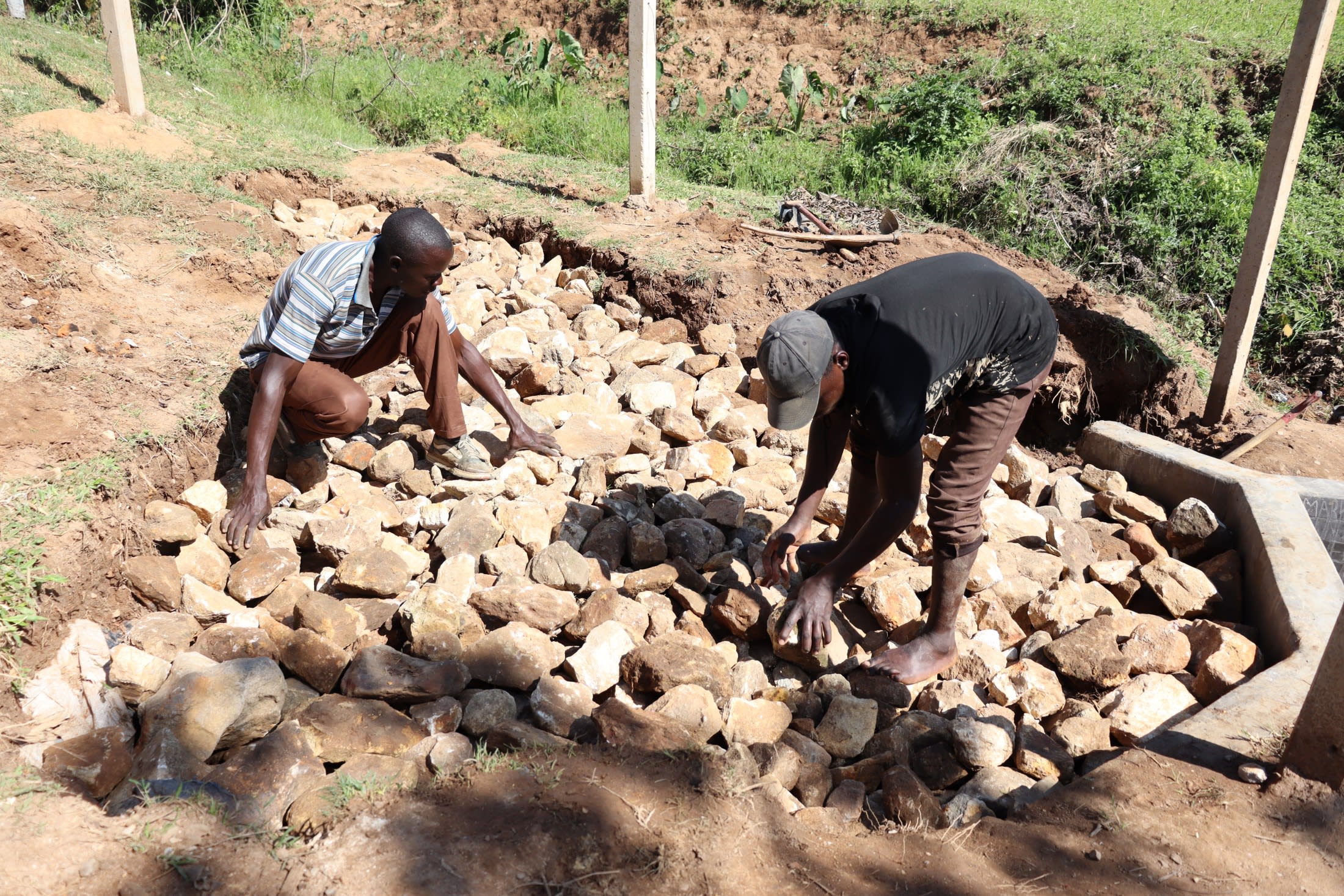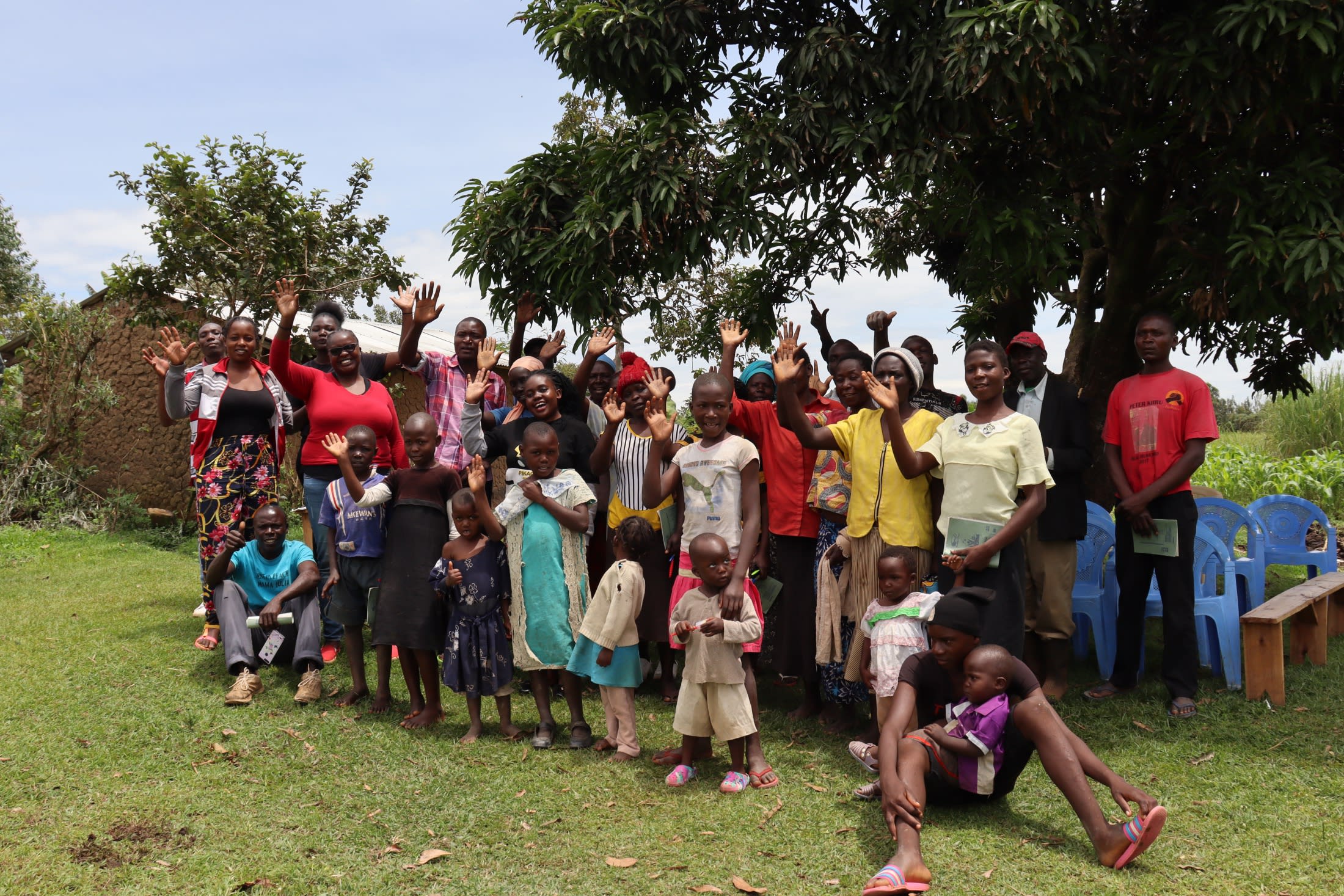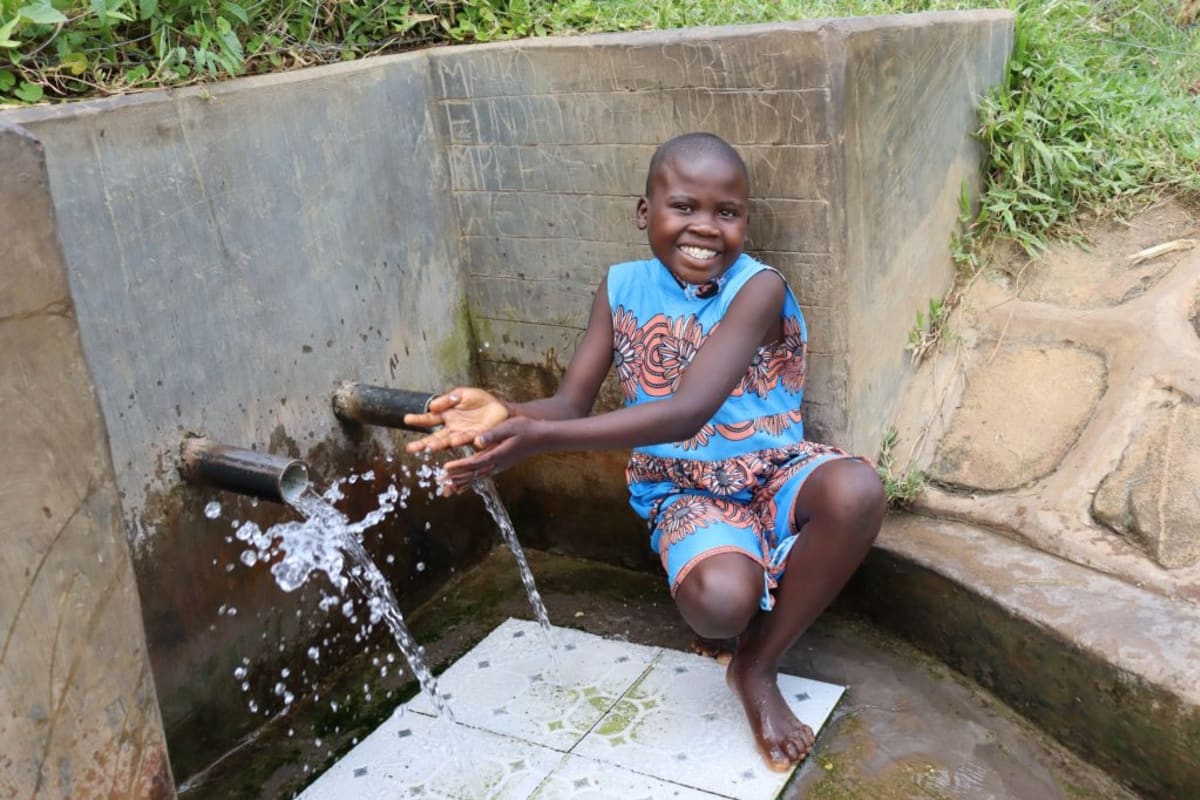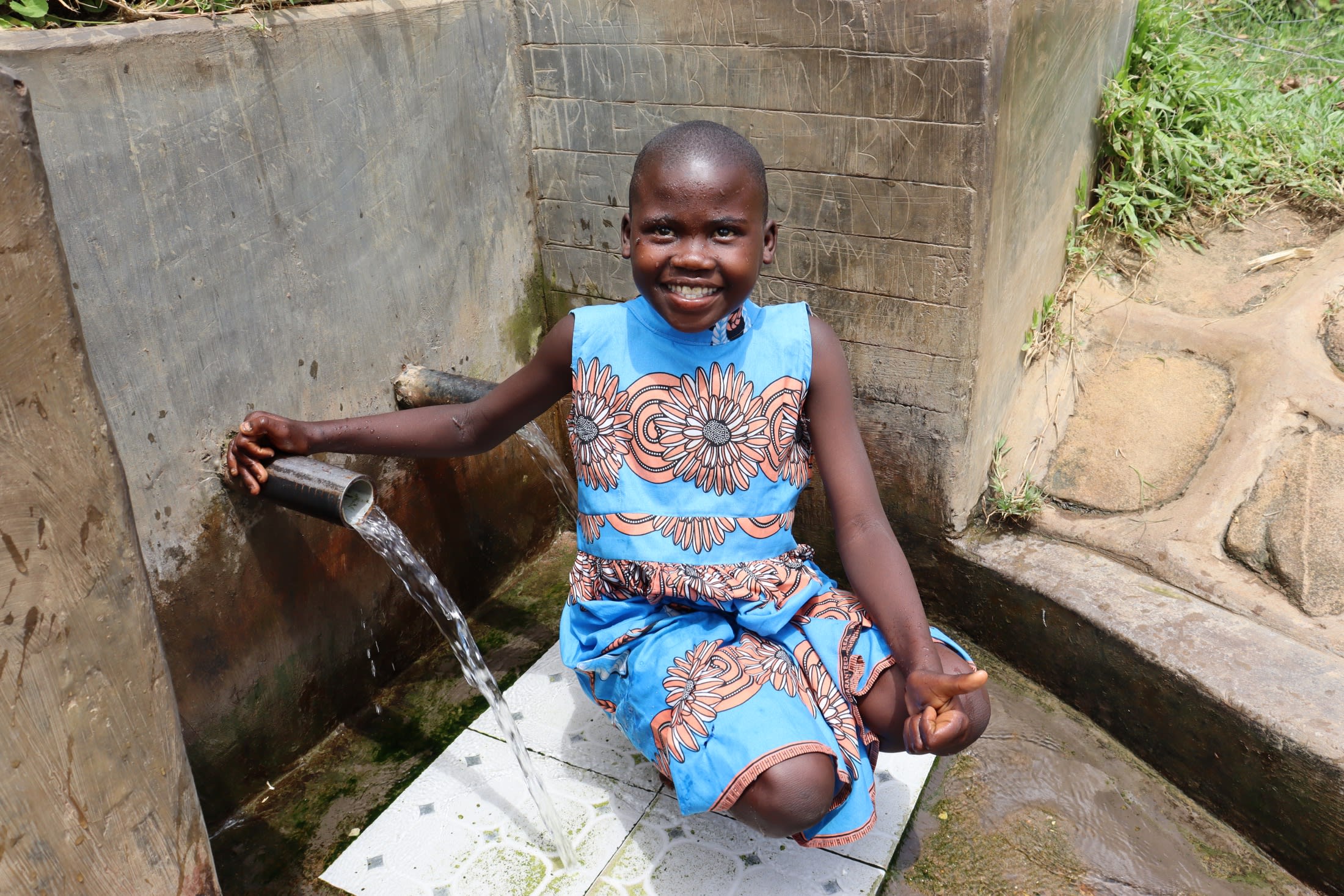Lusumu's 210 people spend too much money trying to treat typhoid in themselves and their loved ones. But the treatment will only work if the source of infection is done away with - which means their source of water, Marko Luvale Spring, needs to be protected.
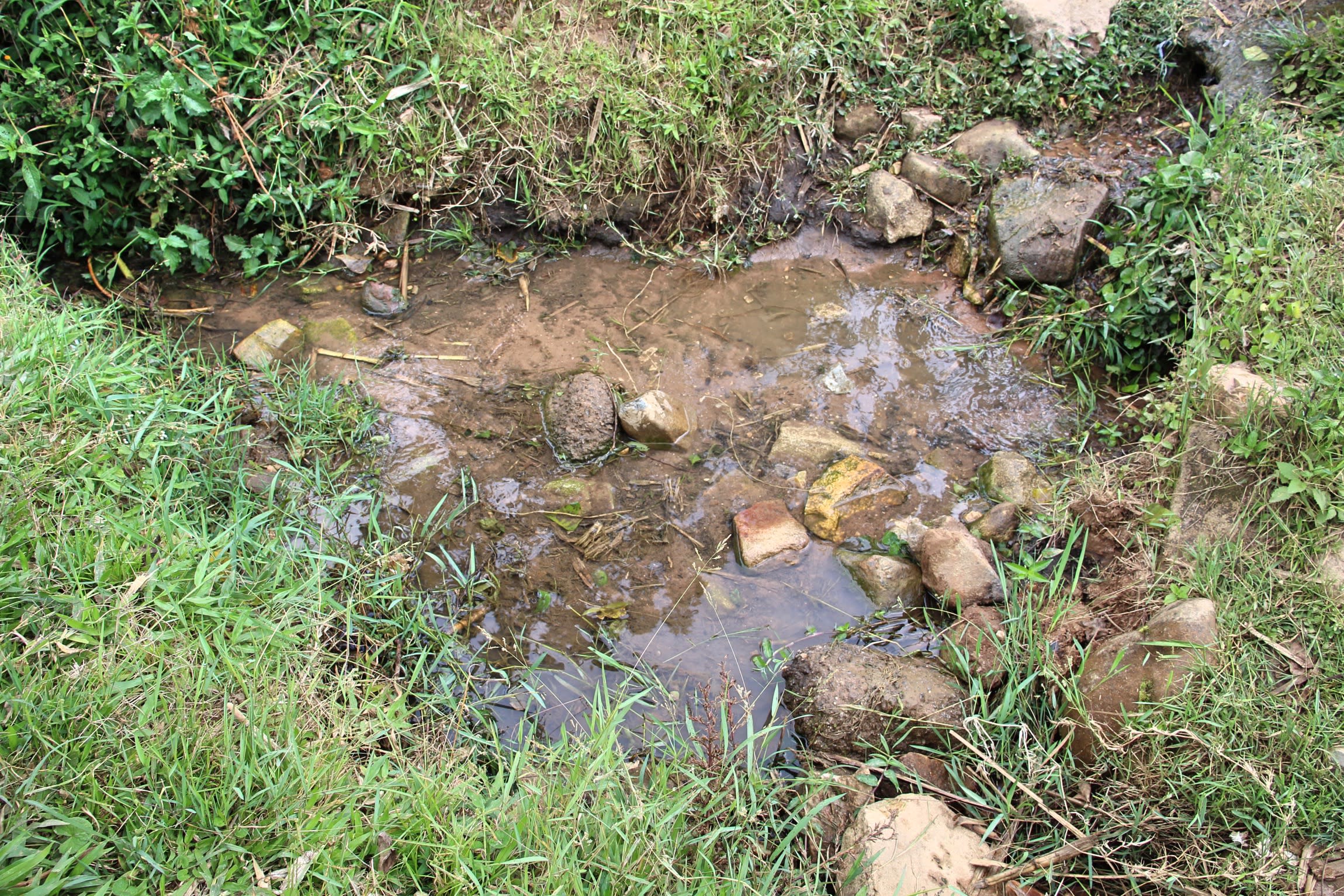
Right now, the spring is open to all sorts of contamination. It sits at the bottom of a slope, surrounded by farmland. Optimally, all spring water should come from beneath the ground's surface, having been naturally filtered. But when it rains, surface water pours directly into the spring, carrying fertilizers, excrement, garbage, and dirt.
These circumstances are perfect for waterborne pathogens. For people who rely on the water every day, it couldn't be worse.

12-year-old Greffin (in the above photo) has experienced water-related illness multiple times now. "I develop a lot of complications when I use water from this source," he said. "A lot of money is spent for treatment, and my performance at school goes down at the same time."
But the spring isn't only contaminated; it's also difficult to fetch water from. People fetching either need to stand in the water itself or balance on rocks and dip their containers in. This takes time, and during peak water collection hours, people line up and wait for their turn to fetch water. After a while, tempers can flare.
27-year-old Esther Nanzala (in the photo below) would normally send her children to the spring to collect water while she accomplishes other essential morning tasks. But because of the conflicts at the spring, she doesn't dare.

"I have children who can help me get water from the spring, but because children are not given [a] chance to draw water before elderly people, [I] am forced to do it myself to avoid conflict," Esther said.
With a protected spring, Lusumu's people will be better able to accomplish their everyday tasks. Their health will improve and so will their relations with their neighbors.
What We Can Do:
Spring Protection
Protecting the spring will help provide access to cleaner and safer water and reduce the time people have to spend to fetch it. Construction will keep surface runoff and other contaminants out of the water. With the community’s high involvement in the process, there should be a good sense of responsibility and ownership for the new clean water source.
Fetching water is a task predominantly carried out by women and young girls. Protecting the spring and offering training and support will, therefore, help empower the female members of the community by freeing up more of their time and energy to engage and invest in income-generating activities and their education.
Training on Health, Hygiene, COVID-19, and More
To hold trainings during the pandemic, we work closely with both community leaders and the local government to approve small groups to attend training. We ask community leaders to invite a select yet representative group of people to attend training who will then act as ambassadors to the rest of the community to share what they learn. We also communicate our expectations of physical distancing and wearing masks for all who choose to attend.
The training will focus on improved hygiene, health, and sanitation habits in this community. We will also have a dedicated session on COVID-19 symptoms, transmission routes, and prevention best practices.
With the community’s input, we will identify key leverage points where they can alter their practices at the personal, household, and community levels to affect change. This training will help to ensure participants have the knowledge they need about healthy practices and their importance to make the most of their water point as soon as water is flowing.
Our team of facilitators will use a variety of methods to train community members. Some of these methods include participatory hygiene and sanitation transformation, asset-based community development, group discussions, handouts, and demonstrations at the spring.
One of the most important issues we plan to cover is the handling, storage, and treatment of water. Having a clean water source will be extremely helpful, but it is useless if water gets contaminated by the time it is consumed. We and the community strongly believe that all of these components will work together to improve living standards here, which will help to unlock the potential for these community members to live better, healthier lives.
We will then conduct a small series of follow-up trainings before transitioning to our regularly scheduled support visits throughout the year.
Training will result in the formation of a water user committee, elected by their peers, that will oversee the operations and maintenance of the spring. The committee will enforce proper behavior around the spring and delegate tasks that will help preserve the site, such as building a fence and digging proper drainage channels. The fence will keep out destructive animals and unwanted waste, and the drainage will keep the area’s mosquito population at a minimum.

 Protected Spring
Protected Spring
 Rehabilitation Project
Rehabilitation Project










